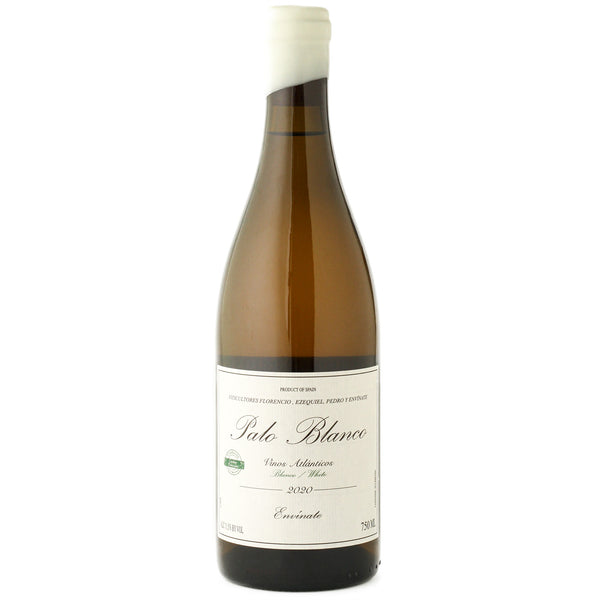Envínate
We couldn’t be more proud to offer such an enviable selection of wines from Envínate. Talk about wines that are hard to come by! These guys are farming micro-plots of vines in some of the most extreme terrain in the world. As you can imagine, production is quite limited, and these can be difficult to get your hands on. We are extremely lucky to be able to have such a robust array of wines on our shelves from one of the world’s most exciting cult producers.
Envínate (which translates to “wine yourself”) came about in 2005 as an idea amongst four friends, Roberto Santana, Alfonso Torrente, Laura Ramos, and José Martínez, who met while studying oenology in mainland Spain. In their work, they seek to highlight distinctive parcels in the Atlantic-inflected regions of Spain - mainly the Canary Islands and Ribeira Sacra. Their aim is to create wines that express the terruño (we hear the word terroir a lot, this is the Spanish version) of each parcel in a clear manner. We think they’ve succeeded beyond all expectations.
Clearly, given the focus on the distinctive character of these parcels, we need to understand these regions and the land to understand these wines. More people today have access to great wine from more places than ever before. Perhaps no place is further off the beaten path for wine-adventurers than the Canary Islands. This island chain remains an autonomous community of Spain, but geographically and geologically it is more a part of Africa, lying some 60 miles west of Morocco. The terrain here is simply arresting, almost extraterrestrial.
The vineyards on the Canaries are highly unusual, planted at very high elevations on terraces carved out of volcanic hillsides in unique microclimates. Envínate works on the island of Tenerife in the middle of the archipelago. Tenerife and the other Canaries are marked by their isolation from the rest of the world, and as a result they have avoided phylloxera, the aphid pest that nearly destroyed all European vines in the 19th Century. The wine industry was saved when scientists discovered that native European vines could be grafted onto American rootstocks, which were immune to the effects of phylloxera.
On the Canaries, however, vines can be planted on their own rootstock and grafting is unnecessary in the absence of the threat of phylloxera, so these wines present a unique opportunity to drink wines made from ungrafted vines.
Envínate works in three sites on Tenerife all north of the island’s central volcano, each with very distinct microclimates: Taganan, Valle de la Orotava, and finally the vineyards near the winery in Santiago del Teide (the grapes here go into their “Benje” wines).
Taganan is perhaps the most visually striking of these areas, with its jutting rock formations, ancient terraces, and very ancient vines. Tucked into the high hills on the northeast corner of Tenerife, the climate here is typical of the areas on the island north of Mt. Teide - windy, cool, wet, and humid. The site’s seaside terraces are dug into cliffs so steep they must be worked by hand. One of the Envínate four, Roberto Santana, says there are still parts of Taganan that can only be reached by horseback. The humidity necessitates careful, labor-intensive farming to avoid mildew on the grapes.
Margalagua is a single parcel in Taganan. Planted to ancient Madeira varietals, the site is perched on ancient terraces that protect the vines from the harsh winds off the sea. The iron-rich volcanic soils of this parcel produce a uniquely robust wine for the Envínate line-up with silky tannins. They bottle this parcel separately from the rest of Taganan.
The Valle de la Orotava lies to the west of Taganan, and likewise exemplifies the climate of northern Tenerife with its strong sea breezes and rain-cloud humidity. The plots here lie at higher altitudes and are further inland. Two sites, La Habanera and San Antonio, are planted to the native red grape, Listán Negro. The Listán Negro in La Habanera is planted on sandy soils and tends to have a spicy, aromatic, and heavily mineral character. San Antonio has more clay-heavy soils. The grapes from this site lend more texture, weight and fruit. Both sites are blended to produce the “Migan”. Palo Blanco is planted mainly to the white Listán Blanco variety, and produces a single site wine of the same name. The grapes are planted on rich black volcanic soils at 600m elevation. The wines from this parcel are noted for their mysterious volcanic intensity.
We are super excited to be able to offer limited quantities of these in-demand wines. Get them while you can!!
Special thanks to Envínate’s importer, José Pastor, who provided much of the information for this rundown and who has been a pioneer in introducing the wines of the Canaries to the American market.
Cheers, Mack










